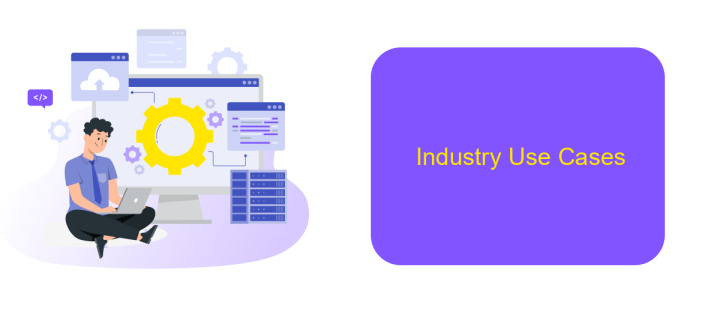UiPath Vs Pega
When it comes to automating business processes, UiPath and Pega are two leading platforms that often come into consideration. Both offer robust solutions for streamlining workflows, but they cater to different needs and industries. This article delves into the key features, strengths, and weaknesses of UiPath and Pega, helping you make an informed decision for your organization's automation strategy.
Comparison of Key Features
When comparing UiPath and Pega, it is essential to examine their key features to understand their strengths and weaknesses. Both platforms offer robust automation capabilities, but they differ in several critical areas.
- Ease of Use: UiPath provides a user-friendly interface with drag-and-drop functionality, making it accessible for users with minimal coding experience. Pega, on the other hand, offers a more complex interface that may require more training.
- Integration Capabilities: UiPath excels in integrating with a wide range of third-party applications through its extensive library of connectors. Pega also supports integrations but often requires custom development. For seamless integrations, services like ApiX-Drive can be utilized with both platforms.
- Scalability: Both UiPath and Pega are highly scalable, catering to enterprises of various sizes. UiPath is often praised for its flexibility in scaling up automation processes.
- Cost: UiPath generally offers a more cost-effective solution for small to medium-sized businesses, whereas Pega's pricing may be more suitable for large enterprises with complex needs.
In summary, the choice between UiPath and Pega depends on specific business requirements, user expertise, and budget constraints. While UiPath provides a more intuitive and cost-effective solution, Pega offers powerful capabilities for complex enterprise environments.
Platform and Tooling

UiPath offers a comprehensive suite of tools designed for robotic process automation (RPA). Its platform is user-friendly, with a visual drag-and-drop interface that allows even non-developers to automate tasks efficiently. UiPath Studio provides a robust environment for designing automation workflows, while UiPath Orchestrator manages and monitors automated processes. The platform also supports extensive integration capabilities, allowing businesses to connect with various applications and services seamlessly. For instance, using tools like ApiX-Drive, companies can streamline integrations between UiPath and other enterprise systems without needing extensive coding knowledge.
Pega, on the other hand, is known for its Business Process Management (BPM) capabilities and offers a unified platform for building and managing enterprise applications. Pega's model-driven approach enables rapid application development and deployment, reducing time-to-market. The platform includes Pega Platform, which provides tools for designing workflows, case management, and decision rules. Pega also excels in integrating with existing systems and offers connectors for popular enterprise applications. While Pega's focus is broader than RPA alone, it provides a robust environment for automating complex business processes and enhancing operational efficiency.
Pricing and Licensing

When comparing UiPath and Pega in terms of pricing and licensing, it's important to consider the different structures and offerings each platform provides. Both platforms offer scalable solutions, but their pricing models can vary significantly based on the needs of your organization.
- UiPath: UiPath offers a subscription-based pricing model with multiple tiers, including a free Community Edition for small businesses and individual developers. Their Enterprise Edition provides more advanced features and dedicated support, with pricing based on the number of robots and users.
- Pega: Pega's pricing is more complex and typically involves a combination of subscription fees and usage-based charges. They offer tailored solutions based on the specific requirements of the business, which can include cloud or on-premises deployment options.
Choosing between UiPath and Pega will largely depend on your organization's specific needs and budget. For businesses looking to streamline integrations, services like ApiX-Drive can be a valuable addition, offering seamless connection capabilities between various applications and systems, further enhancing the automation experience.
Industry Use Cases

UiPath and Pega are popular tools in the realm of automation, each offering unique capabilities that cater to different industry needs. UiPath excels in robotic process automation (RPA), making it a preferred choice for industries that require repetitive and rule-based tasks automation. On the other hand, Pega is well-known for its robust business process management (BPM) solutions, which are ideal for complex workflows and case management.
Industries such as finance, healthcare, and telecommunications have found immense value in implementing these technologies. For instance, in the finance sector, UiPath can automate data entry and reconciliation tasks, while Pega can streamline loan processing and customer service workflows.
- Finance: UiPath for data entry automation; Pega for loan processing.
- Healthcare: UiPath for patient data management; Pega for claims processing.
- Telecommunications: UiPath for billing automation; Pega for customer service management.
Moreover, integrating these automation tools with other systems is crucial for maximizing their benefits. Services like ApiX-Drive facilitate seamless integration by connecting various applications, ensuring that data flows smoothly across platforms. This enhances the overall efficiency and effectiveness of automation solutions in any industry.
Customer Reviews and Support
Customer reviews for UiPath often highlight its user-friendly interface and extensive library of pre-built automation templates. Users appreciate the robust community support and comprehensive documentation available, which significantly eases the learning curve. However, some users have noted that the initial setup can be somewhat complex and may require additional time to fully understand all features. UiPath's customer support is generally praised for being responsive and effective, helping users troubleshoot issues promptly.
Pega, on the other hand, receives commendations for its powerful process automation capabilities and flexibility in handling complex workflows. Customers value the platform's scalability and integration options, which are facilitated by services like ApiX-Drive that simplify the integration process. Despite these strengths, some users find Pega's interface less intuitive compared to UiPath, which can lead to a steeper learning curve. Pega's support team is recognized for their expertise, although response times can sometimes be slower during peak periods.
- Automate the work of an online store or landing
- Empower through integration
- Don't spend money on programmers and integrators
- Save time by automating routine tasks
FAQ
What are the primary differences between UiPath and Pega?
Which platform is more suitable for large-scale enterprise automation?
Can UiPath and Pega be integrated with other software systems?
Which platform is easier to learn for beginners?
How can businesses implement automation solutions using these platforms?
Apix-Drive is a universal tool that will quickly streamline any workflow, freeing you from routine and possible financial losses. Try ApiX-Drive in action and see how useful it is for you personally. In the meantime, when you are setting up connections between systems, think about where you are investing your free time, because now you will have much more of it.


